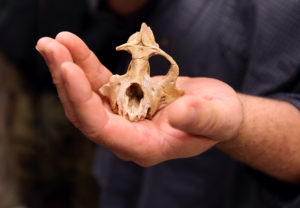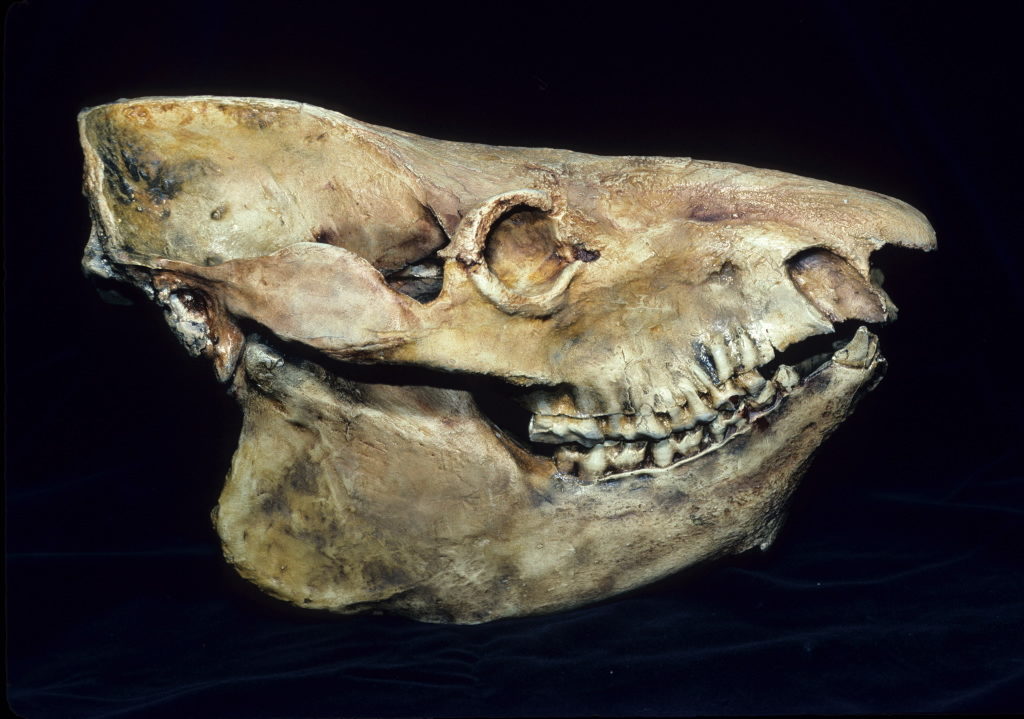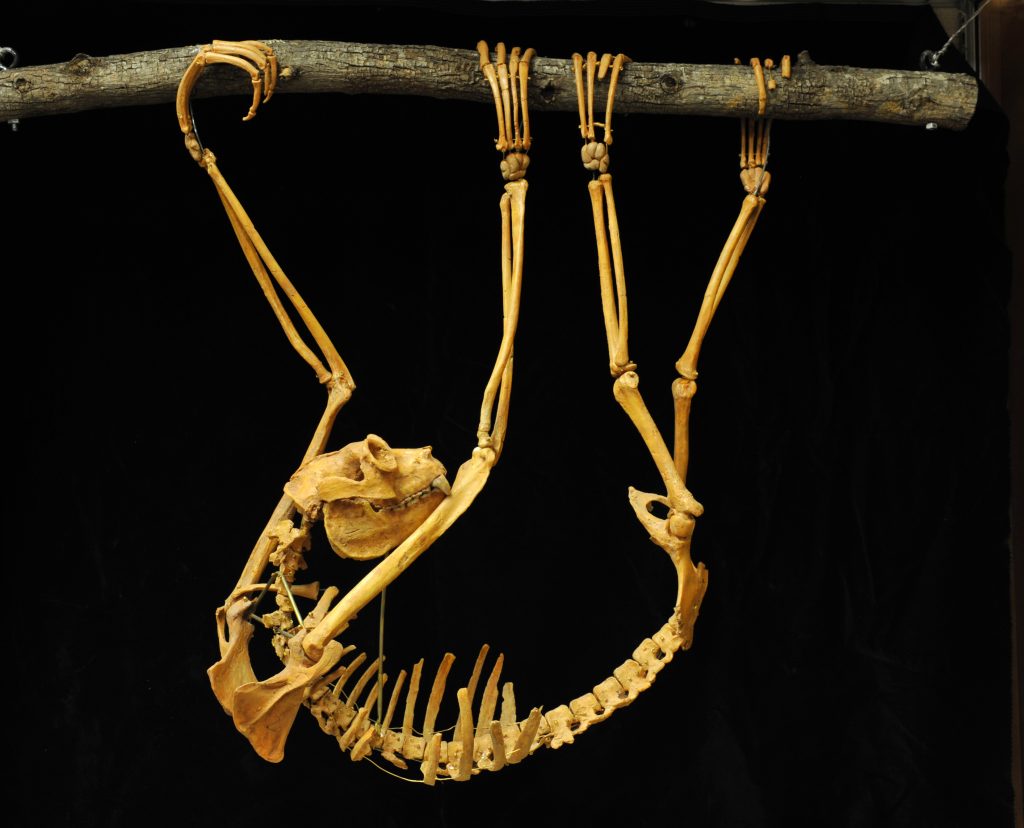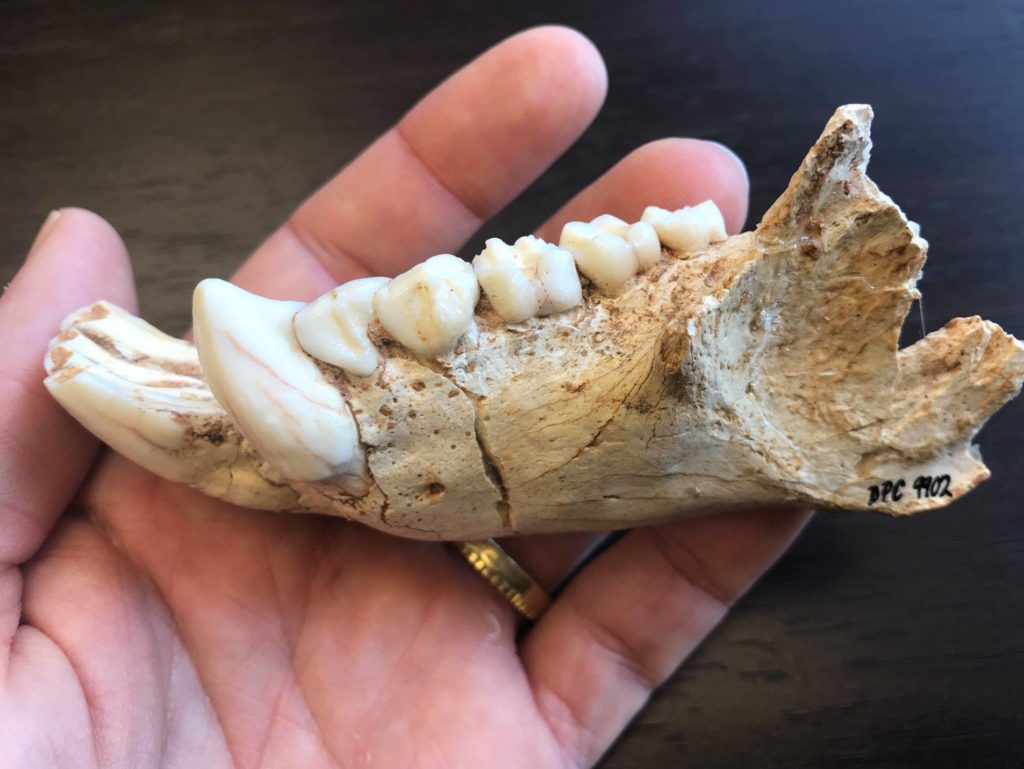
Primates are a specialized group of animals that share many features including relatively large brains, grasping hands, and complex social lives. Here at the DLC we have two large populations of primates: the lemurs that live at the Lemur Center full time, and the humans who study and protect the lemurs. But how are these primates related to each other? What does everything we are learning about lemur diets, diseases, physiology, and social behavior tell us about being a primate or being a human?
In order to explore the biological connections between lemurs and humans, we need to turn to the fossil record to help us understand the evolutionary journey of our primate relatives. Duke researchers and their national and international collaborators target branches along the primate family tree, going out into the field to find evidence of fossil primates and the ancient ecosystems they called home.

The DLCMNH is off campus, both for the Duke Lemur Center and Duke University. Our current address is:
1013 Broad Street
Durham, NC 27705
We are located just north of Duke's East Campus, directly across the street from the Willow Oak Veterinary Hospital. If you are visiting us with a car, pull into the driveway on the north side of the building and park in the small lot behind the DLCMNH. Parking does not require a parking pass. If the lot is full, there is plenty of street parking on Broad Street. Just ring the doorbell by our front door or knock on our side door.

We are now offering small, guided tours of the DLC Museum of Natural History! The Museum is located on Broad Street in Durham, NC, about 10 minutes from the Lemur Center's main campus. As with all tours at the DLC, reservations must be made in advance. Please visit our fossil tours homepage to book your visit.
The DLCMNH has an active volunteer program. Please visit the DLC's volunteer homepage and scroll down to the Museum of Natural History section to find out about opportunities to help us conserve and research the fossil collection.
Donations play a huge part in the curation and preservation of our fossil specimens and in field expeditions of our Department. If you wish to make a donation, please click here or feel free to contact our office directly. We would love to hear from you!
The DLCMNH also maintains a wishlist of items that can be purchased directly via the Duke Lemur Center’s amazon.com wishlist. (Look for items designated for fossil of DLCMNH use.) Select an item from the wishlist, and your gift will be sent directly to the DLCMNH! Be sure to include your name and email address in the notes field so we can send a thank-you.
A special thanks to the following for their generous financial support:
Ann and Gordon Getty Foundation
Trish Kohler
Ben Freed
Elaine McNeil
Richard Kay and Blythe Williams
In addition, we'd love to thank those who purchased magnifying glasses, a color chart, and other DLCMNH-related items from the amazon.com wishlist this year. We're so grateful!

Fossil Friday blog posts highlight fossils and subfossils within the DLCMNH collection. Visit the Fossil Fridays archive HERE.
For decades, the DLC's fossil collections have provided a research resource to the world, yet only a few non-paleontologists have heard of the collection or the countless ways its more than 35,000 specimens can provide insights for scientific studies. With the goal of increasing awareness of the collection for a variety of potential new users—students, educators, scientists, and curious lifelong learners—we will be changing the name "Division of Fossil Primates" to the DLC Museum of Natural History.
In preparation for this, our fossil team has been working with the DLC Education and Outreach team to design an exhibit that tells the epic story of primates, from their origin after the extinction of the dinosaurs to today, when most primate species are on the verge of extinction. The exhibit will also be a tool for virtual classroom tours and programming. We're excited to share the collection with a wider audience through this new DLC exhibit.
The year 2020 also brought new discoveries to the fossil collection, while researchers and the public continued to explore our online specimen collection at morphosource.org. The online collection was visited tens of thousands of times, and hundreds of specimen download requests were fielded from students, researchers, and educators.
The DLC fossil collection also received two federal grants totaling $800,000+ to support our efforts to preserve and share the collection.
To read more, please visit our 2020 Impact Report.

